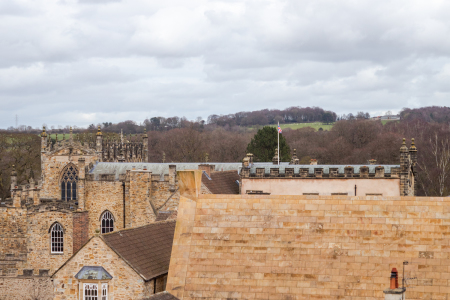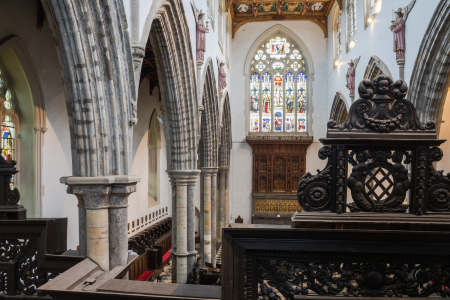Travel: In England’s Bishop Auckland, religious heritage anchors an urban renewal

A recent trip across the pond took me to a town in northeast England that until recently didn’t have much to offer tourists.
As with other towns and villages around Durham, the shire town or seat of County Durham, it reminded me of the Rust Belt back home. Basically, the places where mining and other working-class jobs that once defined entire communities no longer exist.
While Durham with its 930-year-old cathedral gets a good number of mostly day trip tourists, few venture the 12 miles to Bishop Auckland.

The town is undergoing a multi-stage urban renewal project that started after the Church of England sold a centuries-old official residence of the bishop of Durham more than a decade ago.
The state church status of the Anglican church has given certain privileges to many of the 42 diocesan bishops. The best example is the Durham bishopric, which ranks fourth in the hierarchy behind only the archbishops of Canterbury and York and the bishop of London.
If the predominantly Norman or Romanesque cathedral in Durham wasn’t enough grandeur, the bishops also had Auckland Castle — a relic from when the bishops of Durham weren’t just bishops.
From 1076 until 1836, the Roman Catholic and later Anglican bishops of Durham were prince-bishops. Basically, they acted as feudal lords with authority and power well beyond ecclesiastical affairs. Their golden age was before the 1603 union of the English and Scottish crowns under King James I of King James Bible fame, when the diocesan territory served as a buffer state between two countries with a history of wars and border incursions.
Flash forward to today and the former residence is only open to tourists because Jonathan Ruffer, a self-described Evangelical, bought everything of value for the equivalent of more than $21 million. His purchase included 13 paintings by renowned Spanish artist Francisco de Zurbaran that have hung on the walls of the state dining room since 1756.
Instead of taking the best pieces for display in his house or donating everything to a museum far away in London, Ruffer used a significant share of his own personal fortune for philanthropy.
The nonprofit Auckland Project was created to preserve all of the history and heritage, provide locals and tourists alike with access to world-class art and, importantly, revitalize once-prosperous Bishop Auckland.
With Ruffer’s seed money, money from other donors and contributions through assorted government programs or grants, the project is now a mini-theme park with the castle, an observation tower inspired by a medieval siege tower, two art museums and a seasonal, open-air theatrical performance of 2,000 years of English history.
The latest addition, a highly anticipated museum dedicated to the story of faith and religion in Britain from ancient times through the present day, is slated to open sometime in the fall. Future plans envision the conversion of empty buildings in the quaint Market Place, which is anchored by Bishop Auckland’s Victorian-era Town Hall, to hotels and restaurants.

The last vestige of the prince-bishops still used for its intended purpose is the Chapel of St. Peter.
The late 12th century banqueting hall was repurposed into an ornately appointed private bishop’s chapel after the original chapel was destroyed during the English Civil War. Retained by the church after the sale of everything else, the bishop’s chaplain celebrates a service of holy communion every Wednesday.
If you go
As I discovered, Bishop Auckland stands poised to become the next big place to visit for tourists who have done London or York.
Auckland Castle, the art museums (the Spanish Gallery and Mining Art Gallery) and observation tower are open 10:30 a.m. to 4 p.m. Wednesday through Sunday. An annual pass costs £25 (about $31) for adults or £62.50 (about $77) for families of two adults and up to four children. Access to the vast grounds of the castle, known as Deer Park, is free every day from dawn to dusk.
Stay at the Park Head Hotel. While geared toward the Auckland Project, the newly opened hotel makes a good base for day trips to Durham and other places in northeast England. Be sure to visit the nearby Bowes Museum.
The closest airport, Newcastle International Airport, is about 45 minutes by car from Bishop Auckland. While there are no nonstop flights to and from the United States, getting here is possible through a single connection via London on British Airways.
Dennis Lennox writes a travel column for The Christian Post.
Dennis Lennox writes about travel, politics and religious affairs. He has been published in the Financial Times, Independent, The Detroit News, Toronto Sun and other publications. Follow @dennislennox on Twitter.





















